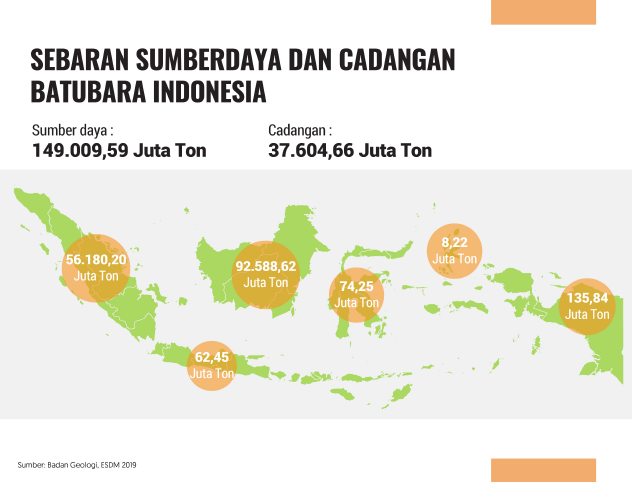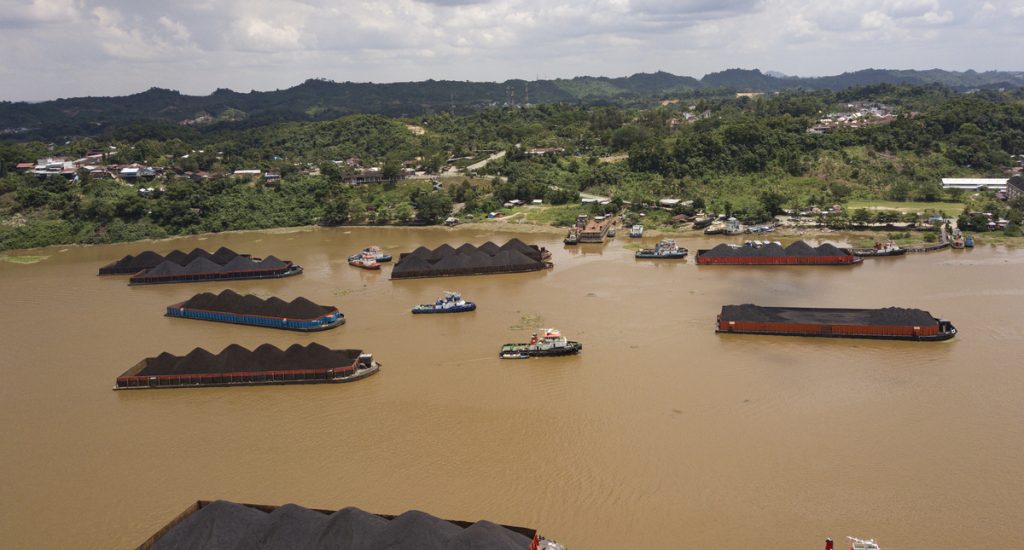"The government must consistently limit the national coal production to 400 million tons per year. Besides, excessive coal production solely for export shows that the paradigm of natural resource management in Indonesia is still commodity-based, not as a driving force for the domestic economy"
Aryanto Nugroho, National Coordinator of PWYP Indonesia
JAKARTA, KOMPAS – PT Bukit Asam Tbk targets producing coal as much as 50 million tons per year or almost double the current production, which averages 25 million tons per year. The coal gasification project into dimethyl ether or DME will be accelerated to support the LPG substitution program.
It was raised in a press teleconference after the Bukit Asam General Meeting of Shareholders (GMS), Monday (5/4/2021). At the GMS, the company distributed dividends of Rp 835 billion this year and proposed changes to several directors’ positions.
The managing director’s position was filled by Suryo Eko Hadianto, who replaced Arviyan Arifin, who had served since 2016. Previously, Suryo was Director of Business Transformation of PT Indonesia Asahan Aluminum (Persero) or Inalum, the holding company of Bukit Asam.
Suryo said, to carry out the company’s strategic projects, such as gasification of coal into DME, significant capital is needed. The company will raise funds, one of which, by relying on coal sales.
Therefore, increasing the company’s coal production is one of the essential priorities for the new board of directors. To carry out the downstream coal program requires a large number of funds.
“We will increase production to 50 million tons per year with what we call a program towards Bukit Asam Emas. I am optimistic that this production target can be achieved by synergizing all the forces within the company,” said Suryo, who admitted that he could not announce when the target would be achieved.
We will increase production to 50 million tonnes per year with what we call the Bukit Asam Emas program.

In addition to increasing coal production, Suryo continued, the acceleration of decision making at the current board of directors is also a concern. The lack of speed in making decisions in the past is one of the company’s performance evaluation results.
Bukit Asam Business Development Director Fuad Iskandar added that the plan to increase coal production is very realistic. Bukit Asam has the potential to increase coal production to a higher level. One of them is by increasing the capacity of coal transportation using the railroad mode.
“For the coal gasification program to become DME, we are excited after this project is included as a national strategic project by the government with the issuance of Presidential Regulation (Perpres) Number 109 of 2020,” said Fuad.
In the Presidential Decree, 201 projects in Indonesia were declared national strategic projects, including toll road infrastructure, ports, airports, and oil refineries. The Bukit Asam coal gasification project in Tanjung Enim, South Sumatra, is included in the list of 193 projects.
Throughout 2020, Bukit Asam posted IDR 17.3 trillion with a net profit of IDR 2.4 trillion. This year, the company targets coal production to reach 29.5 million tons, higher than last year’s 24.8 million tons. In addition to gasification, Bukit Asam is currently working on a 2 x 620-megawatt mine-mouth steam power plant (PLTU) project targeted to operate commercially in March 2022.
The lack of speed in making decisions in the past is one of the company’s performance evaluation results.

Production Limitations
Separately, Indonesia’s Publish What You Pay (PWYP) National Coordinator Aryanto Nugroho said the government should consistently limit coal production to 400 million tons per year. Recently, the government seems to have continued to ramp up production while neglecting the production controls regulated in the National Energy General Plan. It is feared that higher coal production will disturb the balance of the land’s carrying capacity.
“The government must consistently limit the national coal production to 400 million tons per year. Besides, excessive coal production solely for export shows that the paradigm of natural resource management in Indonesia is still commodity-based, not as a driving force for the domestic economy, ” Aryanto said.
Previously, Executive Director of the Indonesian Coal Mining Association (APBI) Hendra Sinadia said the coal industry’s performance throughout 2020 was greatly affected by the Covid-19 pandemic. Since the government declared the first positive case of Covid-19 in early March 2020, demand for coal in the export and domestic markets has decreased. Demand for coal has just recovered in the fourth quarter of 2020.
This condition resulted in lower 2020 coal production compared to 2019. “The challenges ahead for the coal industry in Indonesia are increasingly difficult banking financing, environmental issues related to climate change, and issues related to the energy transition,” said Hendra.
Source: Kompas